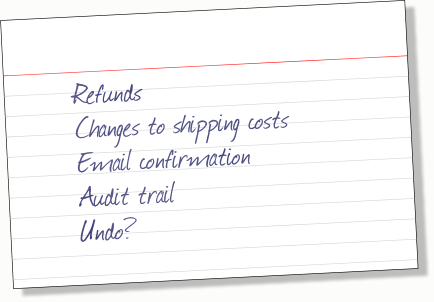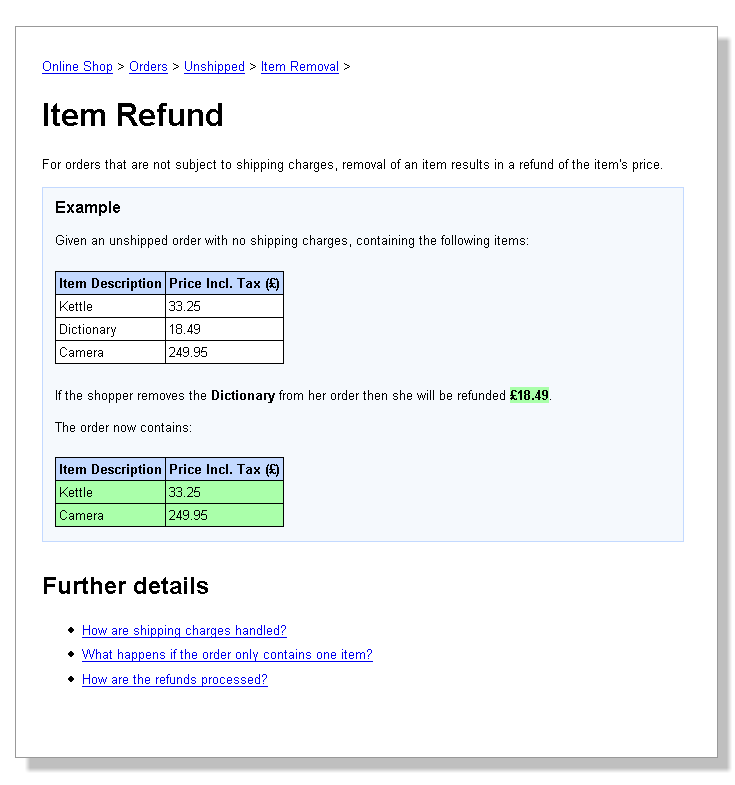Example: Online Shopping Site
Imagine that we are working on an online shopping site, like Amazon. We are already several iterations in, but there's still plenty of functionality we can add.
1. Choose a story to be implemented
From the dozens of possible stories, the following card has been chosen for implementation in this iteration:

On the back of the card are some rough jottings about the scope:

2. Write a story page
The story page acts as a summary of the acceptance criteria as agreed by the group. It is the output of a discussion about the story between developers, testers and the story owner / business expert.
The page is divided into sections "Automated", "Manual" and "Out of Scope". Ideally the acceptance tests will all be automated, but sometimes manual tests are needed. For example, one of the manual tests is to "check user-interface changes are consistent with rest of system"; this kind of test cannot be easily automated.

3. Write detailed acceptance criteria
Again, these are written and agreed as a group before any coding begins.
Each of the items under the "Automated" heading in the story page is a link to an acceptance test. These tests are under a different hierarchy to the stories and organised in a way that results in easily navigable documentation. If you use the right conventions, Concordion will automatically insert breadcrumbs for you.
Each page consists of a concise heading, a description and one or more examples. The breadcrumbs give you context, so you don't need to have long wordy headings and descriptions.
You'll notice that this page is pretty simple to understand and maybe looks overly simplistic. But it's not; rather than having complicated tests that test many things, you can have simple tests that test one thing at a time. Complex behaviours are defined one small strand at a time by decomposing the behaviour. The "Further Details" section at the bottom of the page lists a number of questions that you might ask about the functionality. Each question links to another (equally simple) specification and so on until you run out of questions.

4. Now everyone knows what "done" means for the story
It takes some time to write the acceptance criteria; perhaps 2 or 3 hours for a 5 pair-day story. But it pays dividends in terms of focus, test coverage, and cutting scope creep. Plus, if you take care, you can build up some very valuable documentation that does not go stale.












